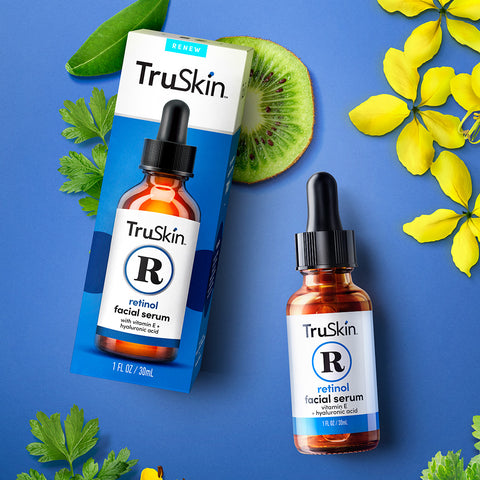
What You Should Know Before Using Retinol For The First Time
Retinol is great. Irritation, redness and dry skin from misuse of this potent ingredient? Not so great.
If you’re interested in skincare, we imagine you’ll have read about retinol many times before. But reading about it and using it to great effect are two very different stories.
You see, retinol is not to be underestimated. Its potency, for which it is adored and revered by dermatologists and beauty experts all over the world, is both its superpower… and its downfall. And if you’re yet to try it, that’s probably the reason you’re so nervous. Yes, you’d love a piece of all that skin-replenishing goodness. However, the potential for irritation far outweighs its potential benefits.
Well, we think that’s a real shame. Because for all its strength, retinol really can be tolerated by almost all skin types and is a powerful weapon against the visible signs of aging and acne breakouts.
But only if you use it wisely, of course.
So, if you’re thinking of taking the plunge with retinol, but need a little reassurance and a few pointers to help you along the way, read on for the most important tips for first-timers…
1. Start Off With A Gentle Formulation
Retinol is part of the retinoid family which also includes other topical vitamin A derivatives such as tretinoin, Retin-A and other retinyl esters. Certain retinoids are only available by prescription and are extremely potent (hence the prescription!), but retinol itself is much weaker and readily available in low-percentage, OTC skincare formulations.
This is good news for first-timers because slightly weaker ingredients at lower percentages are going to be much kinder to your skin. If you’re still nervous, however, try bakuchiol instead of retinol. This wonder-ingredient is nature’s gentle alternative to retinol, offering very similar benefits with much fewer side-effects – if any. So, if you want to start off with the gentlest option possible, we recommend going for bakuchiol over retinol, hands down. And we have a whole range to try, right here.
2. Patch Test First
Patch testing any new product that contains active ingredients is important, but with retinol it’s absolutely crucial.
To do this, simply apply a small amount to a discreet area of your skin – behind the ear, at the back of your neck or on your inner arm – then wait 24-48 hours for signs of sensitivity. A little redness or tingling is fine, but anything that feels uncomfortable or looks super red and angry is a tell-tale sign that this particular retinol product is not for you. It doesn’t mean all retinol is off the table, but you might want to try something more suitable for sensitive skin. One word: bakuchiol!
3. Introduce Retinol Slowly Into Your Routine
If you start using retinol every day from the off you could live to regret it. So, after you’ve patch tested and been given the green light by non-irritated skin, start using your retinol product slowly at first.
Begin your retinol routine just once or twice a week to see how your skin reacts. Do this for a week or so then, if all is well, you can gradually build up to every day. And if things start to get too much? No problem, just reduce your usage back down again. It’s very easy to find your sweet spot if you just listen to your skin.
4. Always Apply Retinol To Dry Skin
Applying serums and moisturizers to damp skin can be a great way to seal in extra moisture. However, damp skin is also thought to absorb products quicker and deeper which is great… until your skin freaks out.
To avoid any risk of irritation, allow your skin to dry fully before applying your retinol product.
5. Alternate Retinol With Other Active Ingredients
Retinol plays well with calming, hydrating and soothing ingredients like hyaluronic acid, aloe, green tea and vitamin E which is why you’ll find all of those beauties in our awesome Retinol Facial Serum. But it’s not friends with everything so be extra careful with active ingredients in the rest of your skincare routine.
Instead of piling on potent formulations all at once, we recommend alternating them. Try your retinol serum one night, for example, and then an exfoliating lotion like AHA, BHA + PHA Liquid Exfoliant or your favorite vitamin C serum the next. By doing this, you’ll limit irritation but still reap all of the goodness of some of the most effective skincare ingredients out there.
6. Don’t Forget To Moisturize
The thing most people hate about retinol? Dry, peeling skin. But this all part of the beauty of retinol doing its job, purging your skin while improving cellular turnover and encouraging all those dulling dead skin cells to beat it so you're left with a fresher, healthier-looking complexion.
This purging process usually only lasts around two to four weeks, but it’s no time to stop moisturizing or any other such nonsense. In fact, moisturizer is going to be your BFF right now so ensure you apply it morning and night after your facial serum. We also recommend going super gentle with your cleansing routine to strengthen your skin’s barrier function and help avoid further moisture loss. Try our Soothing Cleansing Milk which is a real winner for dry or sensitive skin.
And if you still find certain parts of your face are becoming drier and more flaky than others? Avoid applying retinol to these areas for a bit. Or only apply it once a week. Again, it’s all about listening to your skin and understanding what it does and doesn’t like.
7. Use SPF Every Morning
Although retinol doesn’t cause your skin to burn it does break down and become less effective when it’s exposed to sunlight. This is why it’s best used at night.
However, you STILL need to apply sunscreen every morning because all those fresh new skin cells require looking after. And subjecting them to hours of damaging UV radiation is not the way to go about that.
Apply Vitamin C Facial Serum in the morning for extra antioxidant safe-guarding, followed by SPF 30 Mineral Sunscreen with Vitamin C. We call this the ultimate sun protective power couple.
8. Finally, Don’t Give Up
One of the most important things to remember is that retinol takes time to work, so don’t expect to see results overnight. Most OTC retinol formulations require at least three, preferably six months for the true benefits to come to light.
Be patient and you’ll be rewarded in the end.






